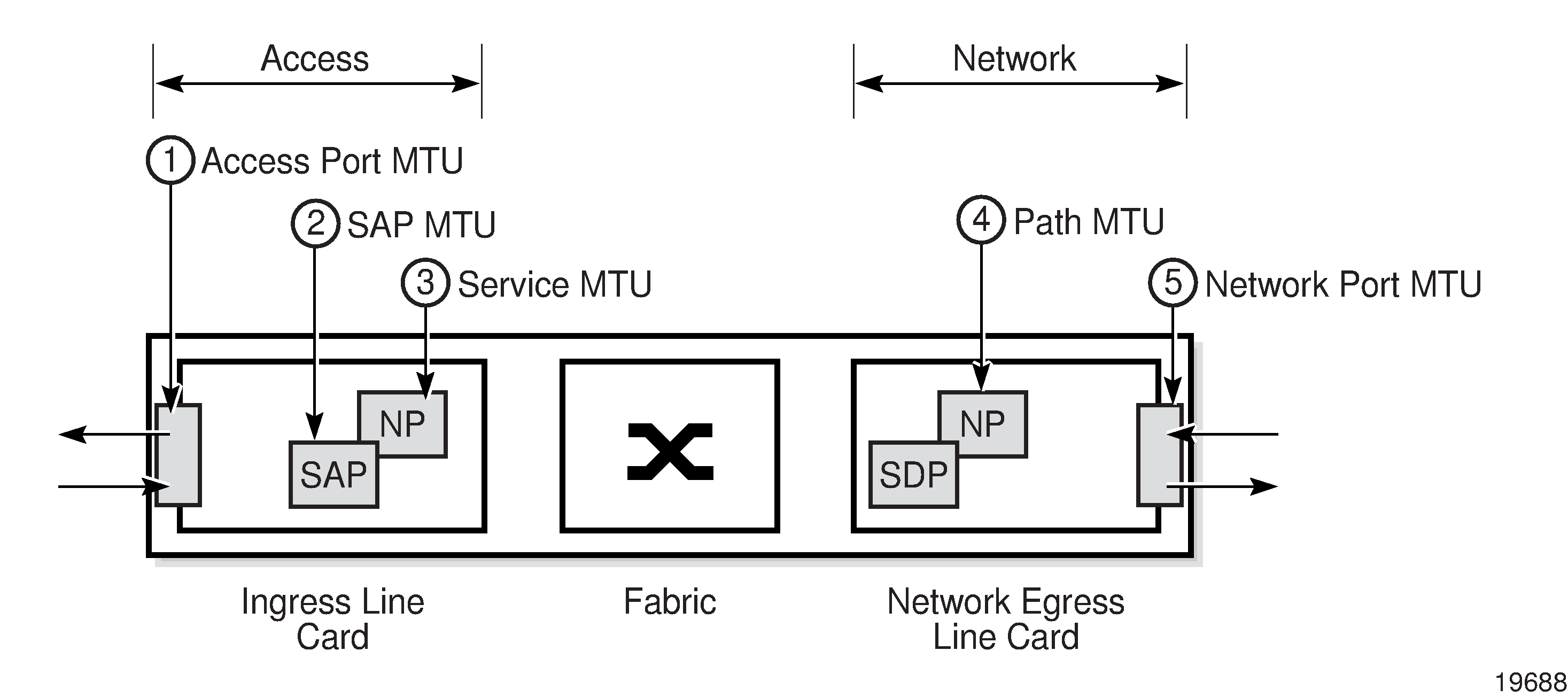Because of the services overhead (that is, pseudowire/VLL, MPLS tunnel, dot1q/qinq and dot1p overhead), it is crucial that configurable variable frame size be supported for end-to-end service delivery.
Observe the following general rules when planning your service and physical Maximum Transmission Unit (MTU) configurations.
The 7705 SAR must contend with MTU limitations at many service points. The physical (access and network) port, service, and SDP MTU values must be individually defined. Figure: MTU Points on the 7705 SAR identifies the various MTU points on the 7705 SAR.
The ports that will be designated as network ports intended to carry service traffic must be identified.
MTU values should not be modified frequently.
MTU values must conform to both of the following conditions:
the service MTU must be less than or equal to the SDP path MTU
the service MTU must be less than or equal to the access port (SAP) MTU
When the allow-fragmentation command is enabled on an SDP, the current MTU algorithm is overwritten with the configured path MTU. The administrative MTU and operational MTU both show the specified MTU value. If the path MTU is not configured or available, the operational MTU is set to 2000 bytes, and the administrative MTU displays a value of 0. When allow-fragmentation is disabled, the operational MTU reverts to the previous value.
For more information, refer to the ‟MTU Settings” section in the 7705 SAR Services Guide. To configure various MTU points, use the following commands:
port MTUs are set with the mtu command, under the config>port context, where the port type can be Ethernet, TDM, serial, or SONET/SDH
service MTUs are set in the appropriate config>service context
path MTUs are set with the path-mtu command under the config>service>sdp context

Frame size configuration is supported for an Ethernet port configured as an access or a network port.
For an Ethernet adapter card that does not support jumbo frames, all frames received at an ingress network or access port are policed against 1576 bytes (1572 + 4 bytes of FCS), regardless of the port MTU. Any frames longer than 1576 bytes are discarded and the ‟Too Long Frame” and ‟Error Stats” counters in the port statistics display are incremented. See Jumbo Frames for more information.
At network egress, Ethernet frames are policed against the configured port MTU. If the frame exceeds the configured port MTU, the ‟Interface Out Discards” counter in the port statistics is incremented.
When the network group encryption (NGE) feature is used, additional bytes due to NGE packet overhead must be considered. Refer to the ‟NGE Packet Overhead and MTU Considerations” section in the 7705 SAR Services Guide for more information.